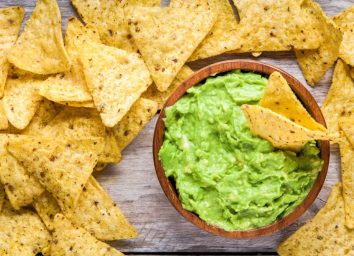How to Eat Protein for Optimal Fat Loss

Most of us get the bulk of our daily protein at breakfast and dinner, but according to new research, loading up on the nutrient just twice a day isn't the best way to go if fat loss is one of your goals. According to the study, which is in the journal Nutrients and Growth Hormone and IGF-1 Research, consuming moderate amounts of protein throughout the day (a strategy dubbed protein pacing) along with combined resistance, interval, stretching and endurance training can give you the results you've been after.
To come to this finding, exercise scientist Paul Arciero, enlisted the help of 30 women and 20 men between the ages of 30 and 65, all of whom hit the gym at least four days per week for 45+ minutes per session. Arciero divided the subjects into two groups. Though each group performed identical exercise routines and consumed the same amount of calories during the 12-week trial, their diets differed. At the end of the three-month period, the group that stretched their protein intake evenly over all of their meals showed greater improvements in fitness and strength than those who ate the bulk of their protein in one or two sittings. These finding support Arciero's previous studies on protein pacing that found the strategy can help decrease belly fat and cholesterol levels and increase lean muscle mass.
Getting similar results at home is simple. Just follow Arciero's PRISE method:
P: protein pacing
Make sure to get a bit of protein at every meal. If you typically have cereal for breakfast, consider adding fewer flakes to your bowl and adding in some walnuts and extra milk. If you prefer oatmeal, mix some protein powder and almonds into your bowl. Reach for high protein snacks between meals, and add things like beans, chicken, fish, grass-fed steak, and quinoa to your lunch and dinner.
R: resistance training
If you're new to the weight training game, check out a lifting class at your local gym or YMCA. It's a great way to get acquainted with lifting and will give your entire body a challenge that's sure to make a difference on the scale. Aim for two resistance workouts per week for best results.
I: interval training
"Interval training means accelerating your exercise speed for a short period of time and then resuming to your normal speed for a slightly longer period," explains Dr. Sean M. Wells, the owner of Naples Personal Training. If you're running on the treadmill, for example, you might warm up for 5 minutes by walking and then go into an all out sprint for a minute and then follow that up with two minutes of walking. You can also vary the intensity by changing the incline. Run for two minutes on a 1% incline and then crank it up to 6% for two minutes. Repeat the pattern until you hit the 30-minute mark. Try to fit this into your gym routine once a week.
For even more fitness tips that can help you reach your better-body goals, don't miss these 30 Tips from Today's Hottest Workouts.
S: stretch
According to Harvard researchers, stretching helps keep muscles flexible, strong, and healthy. Not only is this essential for everyday life, but it can also improve your range of motion during workouts, which will give you better results and ward off injury. When you're trying to trim fat and lose weight, getting the most out of every sweat session is vital! So set aside 10 extra minutes and stretch it out before and after every workout.
E: endurance training
Endurance training is great for heart health and burns mega calories. When paired with interval training and weight lifting, you'll see great results. Aim for two cardio sessions per week that are 30 minutes or more.








